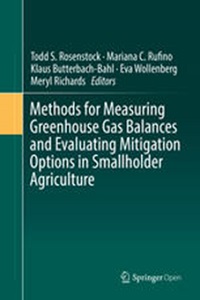Resource information
Measurements of nutrient stocks and greenhouse gas (GHG) fluxes are typically collected at very local scales (<1 to 30 m2) and then extrapolated to estimate impacts at larger spatial extents (farms, landscapes, or even countries). Translating point measurements to higher levels of aggregation is called scaling. Scaling fundamentally involves conversion of data through integration or interpolation and/or simplifying or nesting models. Model and data manipulation techniques to scale estimates are referred to as scaling methods.
In this chapter, we first discuss the necessity and underlying premise of scaling and scaling methods. Almost all cases of agricultural GHG emissions and carbon (C) stock change research relies on disaggregated data, either spatially or by farming activity, as a fundamental input of scaling. Therefore, we then assess the utility of using empirical and process-based models with disaggregated data, specifically concentrating on the opportunities and challenges for their application to diverse smallholder farming systems in tropical regions. We describe key advancements needed to improve the confidence in results from these scaling methods in the future.



